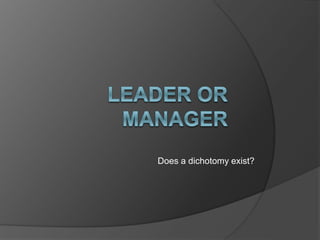Ldrs app presentation
•Als PPTX, PDF herunterladen•
0 gefällt mir•461 views
this is the first rough draft version.
Melden
Teilen
Melden
Teilen

Empfohlen
Weitere ähnliche Inhalte
Was ist angesagt?
Was ist angesagt? (20)
Learning organization and change management power point

Learning organization and change management power point
Action learning OD interventions - Organizational Change and Development - M...

Action learning OD interventions - Organizational Change and Development - M...
Future of Organizational Development - Organizational Change and Development...

Future of Organizational Development - Organizational Change and Development...
How Effective Leadership and Governance Influences Organisational Performance...

How Effective Leadership and Governance Influences Organisational Performance...
Managers' roles in the facilitation of workplace learning

Managers' roles in the facilitation of workplace learning
Andere mochten auch
Andere mochten auch (9)
Position Training Program For Hostingp H R I M 256 Class

Position Training Program For Hostingp H R I M 256 Class
Ähnlich wie Ldrs app presentation
Ähnlich wie Ldrs app presentation (20)
MG345_Lead from Middle.pptLeading from the Middle Exe.docx

MG345_Lead from Middle.pptLeading from the Middle Exe.docx
Change Management in Adult EducationalOrganizations A Slove.docx

Change Management in Adult EducationalOrganizations A Slove.docx
Executive summary The traditional leadership styles a.docx

Executive summary The traditional leadership styles a.docx
Fundamental of Management (managers & management) Notes

Fundamental of Management (managers & management) Notes
Improving Meetings, Incentives, Conferences, Exhibition (MICE) Performance an...

Improving Meetings, Incentives, Conferences, Exhibition (MICE) Performance an...
Transformational leadership characteristics necessary for today’s leaders

Transformational leadership characteristics necessary for today’s leaders
Transformational leadership characteristics necessary for today’s leaders

Transformational leadership characteristics necessary for today’s leaders
Introduction_The Importance of Leadership and Management for Education.pdf

Introduction_The Importance of Leadership and Management for Education.pdf
Transformational Leadership And Transformational Leaders

Transformational Leadership And Transformational Leaders
Ldrs app presentation
- 1. Does a dichotomy exist?
- 3. Agenda Define Leadership Define Management Explore the dichotomy Provide examples of effective and ineffective leadership/management behaviors Create the continuum Concluding remarks
- 4. How do we define a leader? Leadership can be about the leaders role in the group process Leadership can be about the personality of the leader Leadership can be about the things a leader does Leadership can be a transformative process Leadership can be about skills that the leader possesses Leadership can be about who has the power
- 5. What is unique about management? Influence constituents Use of transactional methods (Rost) Rewards Penalties Focus of goals is on bottom line React to solve problems Maintain order and equilibrium (Fayol) Oversight of activities and routines (Kotter)
- 6. Can Organizations Function Solely Under One or the Other Dichotomy?
- 7. The Manager/Leader Dyad Focus on Goals Offer rewards for success Motivate to achievement Influence followers Management Leadership Influence followers Focus on Goals
- 8. The Manager/Leader Continuum Focus on Goals Offer rewards for success Motivate to achievement Influence followers Management Leadership
- 9. Theoretical Argument Supporting False Dichotomy Situational Leadership Leader’s ability to change to meet needs ○ Reactive behavior in management Needs are directive (task) and supportive (relationship) Leader determines action based on constituents needs Assumptions?
- 10. Team Leadership Participative Management Theories Group construct - both need each other Members of the team are engaged Decisions Goals Vote Relationship with constituents Motivation Acknowledge constituent strengths and weaknesses - proper placement Concerned with effectiveness
- 11. Higher Education
- 12. Understanding the Culture of Higher Education 1. Collegial 2. Managerial 3. Developmental 4. Negotiating Robles (1998)
- 13. Social, political, and economic forces impact Higher Education. Therefore, Higher Education must determine how to change and meet the demands and needs of a changing society…
- 15. The “L” Word LEADERSHIP IN HIGHER EDUCATION Wisniewski (2007) Development Values Partnerships Change Reflection Involvement Transformation Collaboration Assimilation Potential Perseverance Interaction Trust Empathy Listening
- 16. Management in Higher Education Birnbaum (2007) Mission statements Physical Assets Employees Management Systems Fads: “…universally applicable quick-fix solutions…” Creation Narrative evolution Time lag Narrative devolution Dissonance resolution (Why do I feel like I’ve heard this all before??)
- 17. Leadership AND Management in Higher Education Cullen, Joyce, Hassall, Broadbent (2003) 1. Financial Perspective 2. Customer Perspective 3. Business Perspective 4. Innovation & Learning Perspective Creating “A Balanced Scorecard” – Kaplan & Norton (1992)
- 19. Public Sector Dichotomy Leadership and Management Continuum Stereotypical Images of Government Workers Video Illustration
- 22. Efforts at Reform: Govt’t Performance and Results Act of 1993 Program Assessment Rating Tool (PART) of 2002
- 23. Ofc. Of Personnel Mgt. Stats Increase in federal employees making $100,000/year+ Average pay is $71,206 Transportation Dept. has 1,690 people making more than $170,000/year
- 24. Wright & Pandey (2009) Expected to find Transformational Leadership to be less effective in the Public Sector Results indicated that Transformational Leadership is effective in Public Administration Successful public administrators recognize need for continuum
- 25. Bertucci (2006) Transactional Model Merit appointments Remuneration Transformational Model Managers lead by example Managers give support and feedback Managers develop professionalism in staff
- 26. Preston (2008) Found that managerial styles varied according to the field of practice Used Child Welfare, Senior Services, and Employment Services Compared three functional domains: Task Orientation Employee Orientation External Orientation
Hinweis der Redaktion
- This is a difficult question to answer due to the many and varied definitions and understandings of both leadership and management.
- Ability to influence constituents Have common goals Willingness to work to achieve goals Emotional involvement - (Zaleznik) Goal establishment and achievement Relationships Change and Movement - transformational (Fayol, Kotter) Motivate people to “buy into” and work together in the “process”
- Create an example page for management
